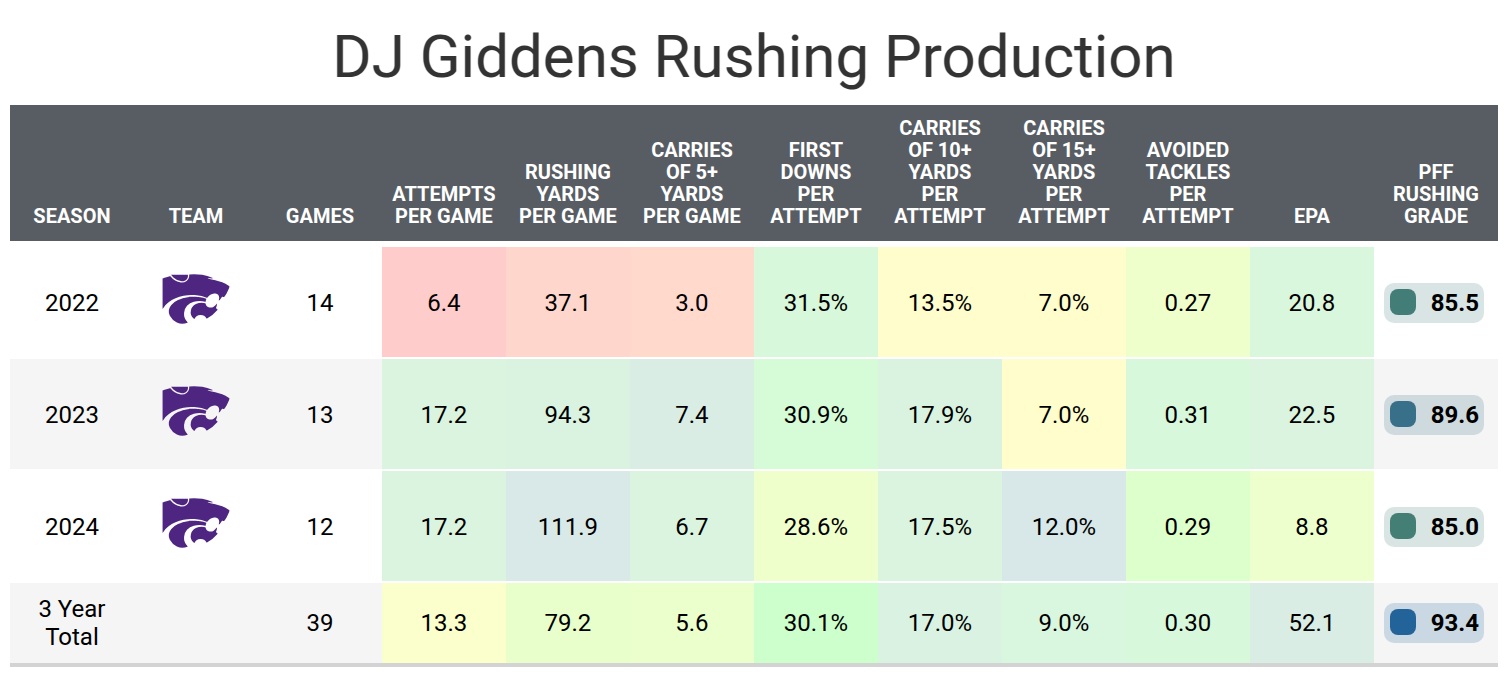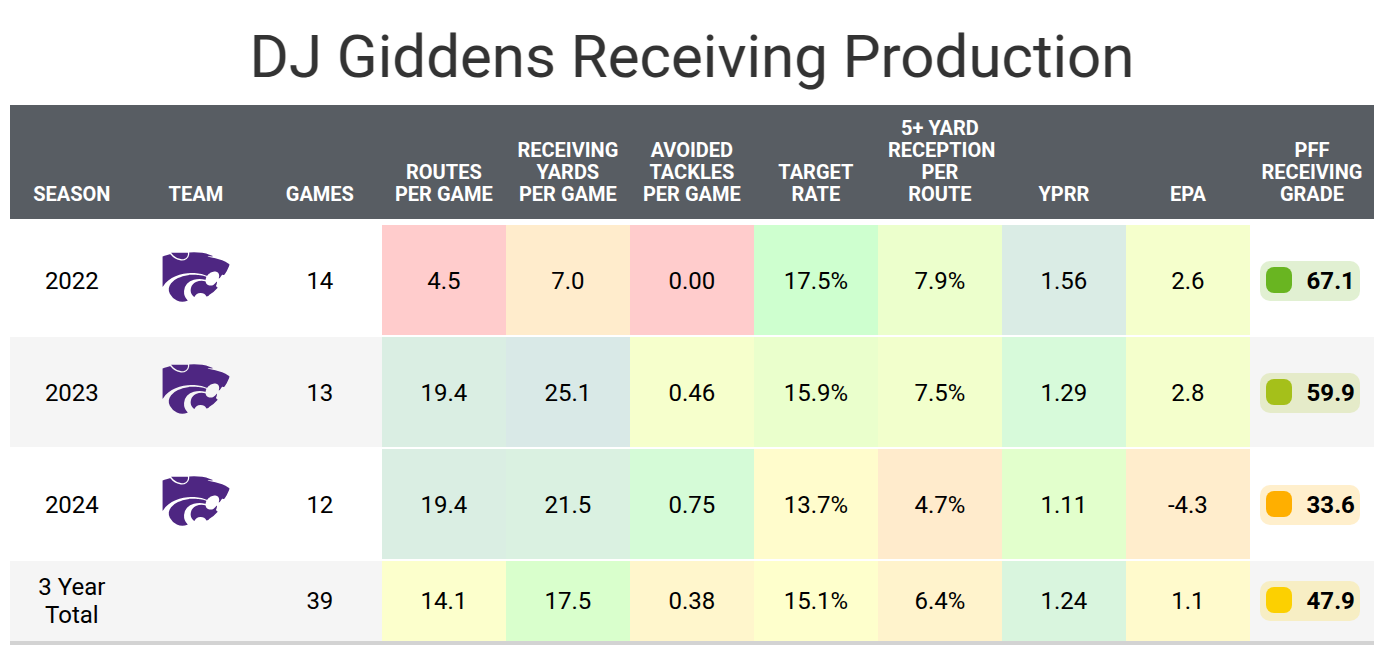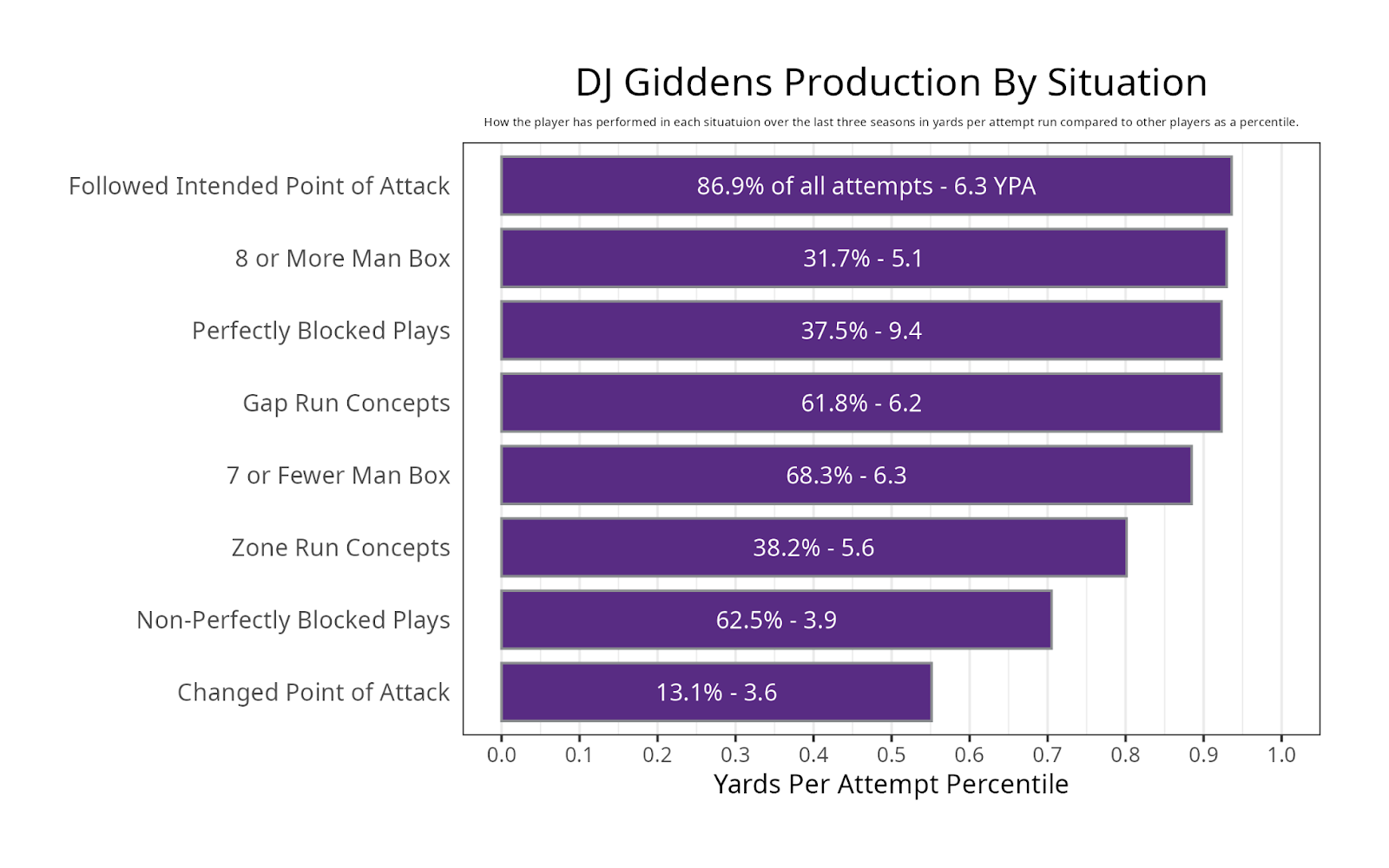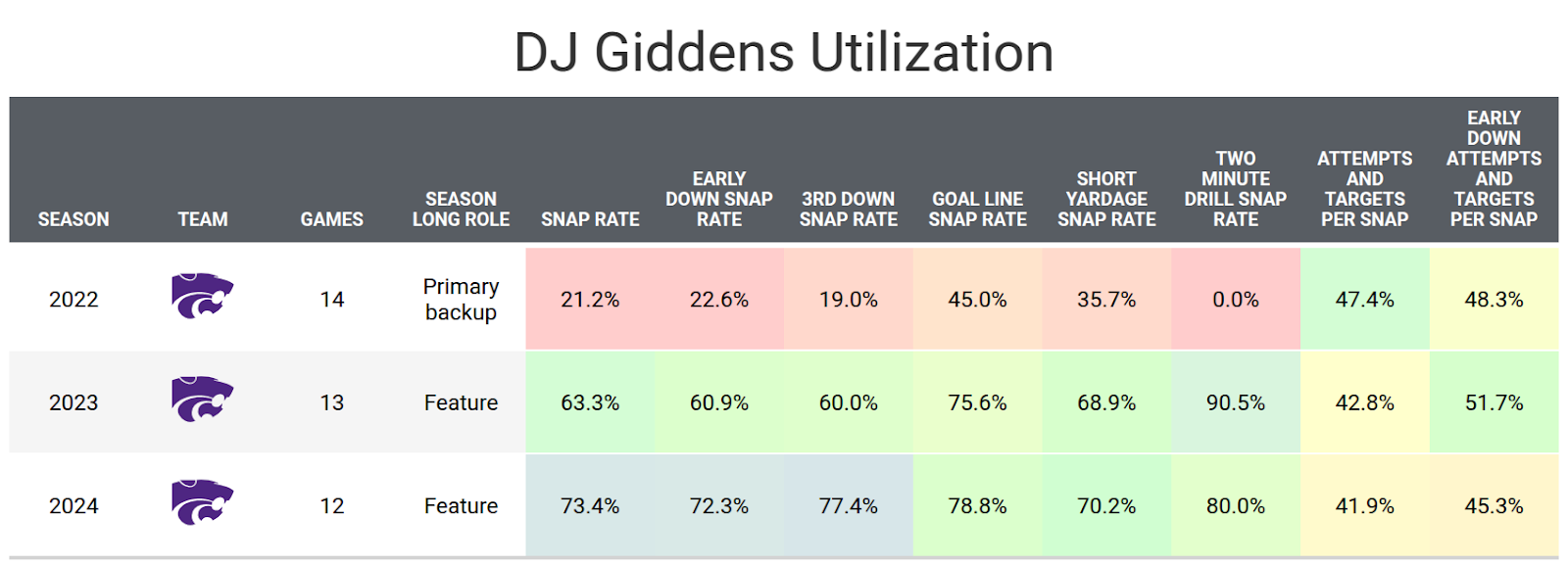Fantasy Football: RB DJ Giddens’ 2025 NFL Draft player profile

2RWCJ46 Kansas State running back DJ Giddens (31) during an NCAA football game on Saturday, Sept. 16, 2023 in Columbia, Mo. (AP Photo/Colin E. Braley)
By
- DJ Giddens was a winner at the NFL Combine: Giddens had a strong 40-yard dash time but also performed well at several other tests compared to other running backs.
- Ball security in the passing game became a problem: Giddens had too many fumbles and dropped passes as a receiver in 2024, which could make it harder for Giddens to be a three-down back.
- 2025 NFL Draft season is here: Try PFF’s best-in-class Mock Draft Simulator and learn about 2025’s top prospects while trading and drafting for your favorite NFL team.
Estimated Reading Time: 5 minutes

PFF’s fantasy football player profile series delivers the most in-depth fantasy football analysis available for the 2025 season.
Using PFF’s exclusive data, we evaluate player performance, competition for touches and how teammates and coaching staffs will impact each player’s fantasy football outlook.
Last updated: 7:15 a.m. Saturday, April 19
Click here for more draft tools:
Player performance
Giddens spent his entire three-year college career at Kansas State. He was Deuce Vaughn‘s backup in his first season, but Giddens earned a slightly better rushing grade. Giddens took over the backfield once Vaughn left for the NFL, averaging over 100 yards per game throughout his two starting seasons. In his first season as a starter, he maintained his consistency on nearly triple the carries. He made more big plays in his final season but lost some consistency.
He is among the few running backs to run gap concepts on over 60% of his runs. He was unsurprisingly better on gap runs. This should help him stand out from other running backs expected to get drafted in the third to fifth-round range, as many of them are better on zone runs. He’s a very physically gifted running back, ranking in the 90th percentile or better at the 40-yard dash, 10-yard split, vertical jump and broad jump.
He is among the more experienced receivers among the running backs in the draft class, averaging over two receptions per game over the last two seasons. Ball security on passing plays was a significant problem for Giddens last season, as he recorded two fumbles and five drops. The drops early in the season potentially prevented Giddens from becoming a more considerable part of the passing game later.



Projected role
Giddens’ potential role isn’t as apparent as most running backs in the draft class. He has experience in all roles and could be an every-down back with some improvement. Our draft guide notes that
Depending on their needs, some teams could start Giddens as a receiving back, while others could start him as an early downback. As a rookie, he will most likely be a rotational player, but a feature NFL back is within his range of outcomes.

Most mocked teams
Most mock drafts, including Giddens, have him getting selected in the third or fourth round. With Pittsburgh, Giddens would likely lessen the Najee Harris loss, allowing Giddens to receive anywhere from five to 15 carries each week.
The Cowboys signed Javonte Williams and Miles Sanders in free agency. Giddens would give them a three-man committee, and all three running backs could play on any down, making them a nightmare to project during the offseason.
The Raiders are a best-case for many of these mid-round running backs because it likely means they passed on a running back early, meaning they would mainly need to compete with a 33-year-old Raheem Mostert for the starting job.
Bottom line
Giddens is a solid running back who needs some work to become a consistent fantasy starter, but with some improvement, he should be capable of reaching that goal.
Footnotes
- Statistics in tables and charts were generally chosen based on their ability to predict future fantasy performance on a per-game or per-opportunity basis or for their ability to describe the player relative to others at the same position.
- “Opportunities” are defined as passing dropbacks, rushing attempts and receiving routes run.
- Numbers are either by season or based on the past three years. For rookies, only college numbers are included. Only NFL numbers are included for non-rookies, even if they played in college during the previous three years.
- Because college competition is easier than NFL competition, most rookies will likely see a decline from their historic numbers.
- Only FBS data is considered for college players and comparisons.
- Kneel-downs are removed from rushing data to provide cleaner quarterback rushing rate statistics.
- The colors for all tables in this article range from blue (good or high) to red (bad or low).
- All percentiles or colors compare the given player to other players with a high sample of opportunities. Generally, the cut-off is one-third of the possible opportunities in the sample. If the player in question doesn’t have enough opportunities, they are still compared, even though they could look good or bad based on the small sample size, which might not be as predictive.
- Information on utilization classifications and their importance can be found here for running backs, wide receivers and tight ends.





